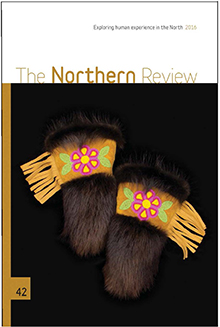Situating Educational Issues in Nunavut: Perceptions of School Leaders and Teachers
DOI:
https://doi.org/10.22584/nr42.2016.007Keywords:
Inuit student, attendance, transient teachers, cultural compatibility theoryAbstract
The Northern Review 42 (2016): 109–129
The purpose of this article is to describe some educational contexts and challenges experienced by students and educators who live in Nunavut. The data for this qualitative study include twenty-four semi-structured interviews involving fourteen principals, vice-principals, and teachers from Nunavut. Four themes surfaced: student attendance, legacy of residential schools, lack of Inuktitut/Inuinnaqtun resources, and transient teachers. With regard to student attendance, participants viewed this issue as one of the most challenging aspects of their education system. Second, participants emphasized that the Nunavut Department of Education was promoting fluent Inuktitut/Inuinnaqtun and English learners. While participants valued the importance of maintaining the vitality of the Inuit language, they believed resources to promote the Inuit language were limited. Third, many principals indicated that the legacy of residential schools was a reason some school-parent relationships lacked an element of trust. Last, participants explained that the constant teacher turnover caused relational strains between educators, students, parents, and community members. Cultural compatibility theory was employed as the philosophical basis to conceptualize findings. This theory assumes that a student needs an educational experience where that learner can see, feel, hear, taste, and touch his/her cultural values and beliefs. The design of educational programs need to foster the unique identities of Inuit peoples through the implementation of curricula built upon local Inuit culture, language, and knowledge. In doing so, attendance issues within school can be addressed, for example. Also, when parents see their culture within the school curriculum and environment, they will feel more welcomed and at home in this familiar context.
Downloads
Published
Issue
Section
License
Authors who publish with this journal agree to the following terms:
a. Authors retain copyright and grant the journal right of first publication, with the work simultaneously licensed under a Creative Commons License that allows others to share the work with an acknowledgement of the work's authorship and initial publication in this journal.
b. Authors are able to enter into separate, additional contractual arrangements for the non-exclusive distribution of the journal's published version of the work (e.g., post it to an institutional repository or publish it in a book), with an acknowledgement of its initial publication in this journal.
c. The journal has the right to authorize third-party publishers & aggregators to include the Article in databases or other services (EBSCO, Proquest).
d. The journal has the right to share the Article on the Internet, through social media and other means.


